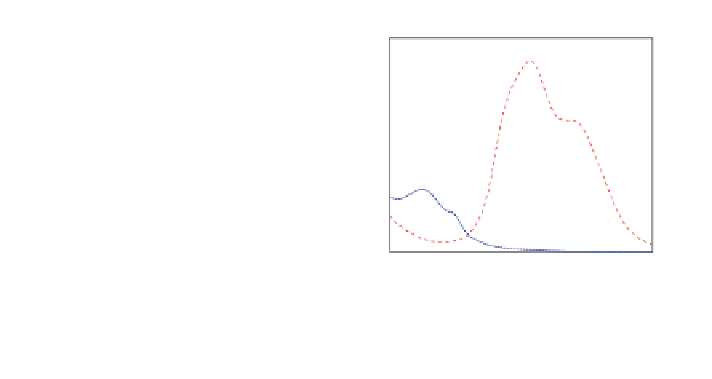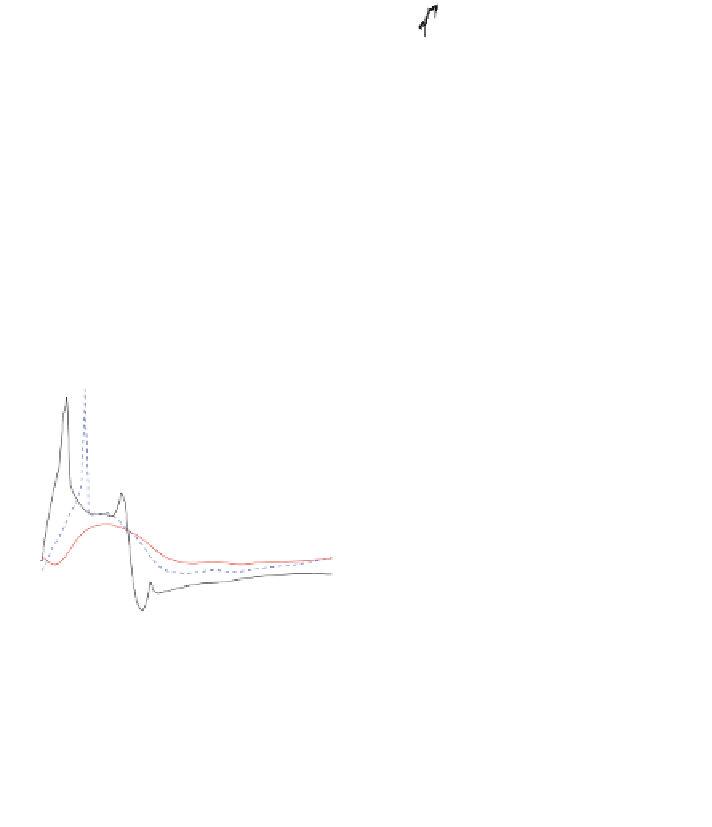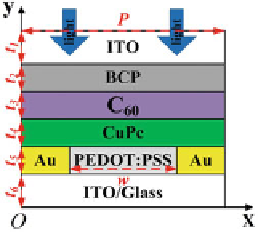Environmental Engineering Reference
In-Depth Information
(a)
(b)
0.025
CuPC
C60
1.5
1
0.02
0.5
0
400
600
800
0.015
Wavelength (nm)
0.01
0.005
0
400
450
500
550
600
650
700
750
800
Wavelength (nm)
Fig. 7.2 a The schematic structure of a unit cell of the flat-heterojunction OSC. The structural
parameters are t
1
¼
100 nm, t
2
¼
10 nm, t
3
¼
40 nm, t
4
¼
30 nm, t
5
¼
30 nm, t
6
¼
100 nm,
w
¼
100 nm, and P
¼
200 nm; b the absorption coefficients of CuPc and C
60
. The inset is the
solar irradiance spectrum of an air mass 1.5 global. 2011 OSA; Ref. [
16
]
(b)
(a)
3
4.5
Degree=0
Degree=40
Degree=80
Degree=0
Degree=40
Degree=80
4
5
x
10
−4
2.5
3.5
0
−5
3
2
−10
2.5
Strip
Non−Strip
−15
1.5
−20
2
400
500
600
700
800
Wavelength (nm)
1.5
1
1
0.5
0.5
400
450
500
550
600
650
700
750
800
400
450
500
550
600
650
700
750
800
Wavelength (nm)
Wavelength (nm)
Fig. 7.3 The absorption of the periodic strip structure is compared to that of the nonstrip
structure replacing the laterally periodic Au-PEDOT:PSS-Au pattern by the planar PEDOT:PSS
layer. The near-field profiles of the absorption peaks pointed by the arrows are shown in Fig.
7.4
.
a The absorption enhancement factor for the TE polarization. The inset shows the averaged
power density of the Au-PEDOT:PSS-Au pattern along the x direction calculated by Eq. (
7.38
).
The negative power density peak due to the opposite propagation direction coincides with the
absorption peak at h
¼
40
with the wavelength of 460 nm; b the absorption enhancement factor
for the TM polarization. 2011 OSA; Ref. [
16
]
Figure
7.2
b shows the absorption coefficients of CuPc and C
60
. The separated
absorption peaks can improve the light absorption of OSCs, which can be realized
by different enhancement mechanisms with respect to different materials. Com-
pared with the absorption of the nonstrip structure making from the planar PE-
DOT:PSS layer, the enhancement factors of the absorption for the strip structure of
the laterally periodic Au-PEDOT:PSS-Au pattern are shown in Fig.
7.3
a, b for the
TE and TM polarizations, respectively.
For the TE polarization, the absorption enhancement is obtained from 400 to
500 nm with the very strong absorption peaks, especially at the oblique angles.

















































































































































Search WWH ::

Custom Search